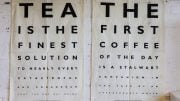Myopia and hyperopia (nearsighted and farsighted correspondingly) are one of the most common eye diseases in the United States. According to the National Eye Institute at the National Institutes of Health (NIH) states, that 5-10% of Americans have hyperopia. About 42% of Americans aged 12-54 are nearsighted.
According to the Centers for Disease Control and Prevention (CDC), there are more than 40 million Americans wear contact lenses (as of 2014).
On April 10, the Food and Drug Administration (FDA) cleared the first of its kind lenses Acuvue Oasys from Johnson & Johnson Vision Care, Inc. These lenses automatically change tint density depending on the amount of light they are exposed to.
It is possible with Transitions Light Intelligent Technology, developed by the J&J Vision Care. These lenses are developed for everyday use for people with myopia or hyperopia.
Patients with certain degrees of abnormal eye curvature (astigmatism) can use light-adaptive lenses as well.
The FDA reviewed Acuvue Oasys Contact Lenses with Transitions Light Intelligent through premarket notification pathway. It means that the company demonstrated that their new device is substantially equivalent to a legally marketed predicate one.
Transitions Light Intelligent Technology
Acuvue Oasys contact lenses contain a special photochromic substance. This additive reacts to the amount of ultraviolet which it is exposed to and makes lenses darkened in bright sun. When contact lenses exposed to dark or normal lighting conditions, the tint is back to its original density.
Malvina Eydelman, director of the Division of Ophthalmic, and Ear, Nose and Throat Devices at the FDA’s Center for Devices and Radiological Health, said that that contact lens was the first of their kind to incorporate the same technology that has been used in eyeglasses that automatically changed their tint in the sun.
The FDA reviewed a clinical study of 24 patients who wore Acuvue Oasys contact lenses to evaluate their driving performance. It included not only wearing contacts during the day but also during nighttime.
According to the study results, there were no concerns regarding vision or driving performance during the clinical trial.
However, not all the people can use the benefits of the lens with light-adaptive technology. Here are the health conditions, that should stop patients from using contacts: infection or inflammation in eyelids or around the eye; red or irritated eyes and an active eye infection; reduced corneal sensitivity; allergic reactions caused by lens on the surface of the eye or surrounding tissue; some systemic health conditions that can affect the eye and be caused by lens.
People with cornea, conjunctiva or eyelids abnormalities or injuries. Any other previously diagnosed health condition that makes wearing of contact lenses uncomfortable. A severe dry eye is another health condition that prevents patients from using the lens.
Aside from health conditions, there are also time limitations for wearing contact lenses with light intelligent technology. Patients should not sleep in contact lenses; patients should not wear these contacts more than two weeks in a row.
The lenses should not be exposed to the water or used as a substitute for the special ultraviolet eye protection.





Be the first to comment on "The FDA Approves the First Contact Lenses with Light-Adaptive Technology"